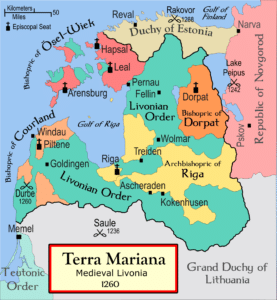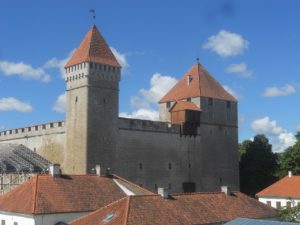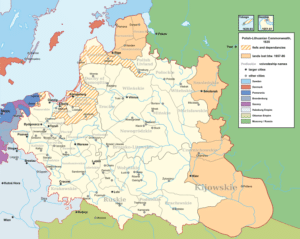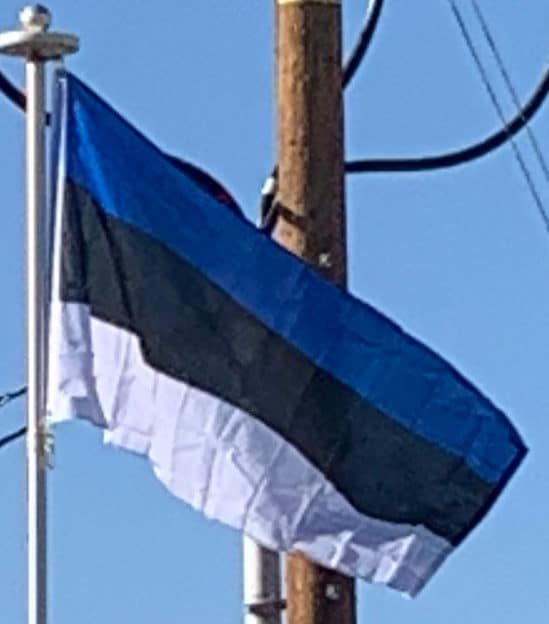
After the crusade, the territory of present-day Southern Estonia and Latvia was named Terra Mariana, but later it became known simply as Livonia. Northern-Estonia became the Danish Duchy of Estonia, while the rest was divided between the Sword Brothers and prince-bishoprics of Dorpat and Ösel–Wiek. In 1236, after suffering a major defeat, the Sword Brothers merged into the Teutonic Order becoming the Livonian Order. In the next decades there were several uprisings against foreign rulers on Saaremaa. In 1343, a major rebellion started, known as the St. George’s Night Uprising, encompassing the whole area of Northern-Estonia and Saaremaa. The Teutonic Order finished suppressing the rebellion in 1345, and the next year the Danish king sold his possessions in Estonia to the Order. The unsuccessful rebellion led to a consolidation of power for the Baltic German minority. For the subsequent centuries they remained the ruling elite in both cities and the countryside.
During the crusade, Reval (Tallinn) was founded, as the capital of Danish Estonia, on the site of Lindanise. In 1248 Reval received full town rights and adopted the Lübeck law. The Hanseatic League controlled trade on the Baltic Sea, and overall the four largest towns in Estonia became members: Reval, Dorpat (Tartu), Pernau (Pärnu), and Fellin (Viljandi). Reval acted as a trade intermediary between Novgorod and Western Hanseatic cities, while Dorpat filled the same role with Pskov. Many guilds were formed during that period, but only a very few allowed the participation of native Estonians.

Protected by their stone walls and alliance with the Hansa, prosperous cities like Reval and Dorpat repeatedly defied other rulers of Livonia. After the decline of the Teutonic Order after its defeat in the Battle of Grunwald in 1410, and the defeat of the Livonian Order in the Battle of Swienta on 1 September 1435, the Livonian Confederation Agreement was signed on 4 December 1435.
The Reformation in Europe began in 1517, and soon spread to Livonia despite opposition by the Livonian Order. Towns were the first to embrace Protestantism in the 1520s, and by the 1530s the majority of the gentry had adopted Lutheranism for themselves and their peasant serfs. Church services were now conducted in vernacular language, which initially meant German, but in the 1530s the first religious services in Estonian also took place.

During the 16th century, the expansionist monarchies of Muscowy, Sweden, and Poland–Lithuania consolidated power, posing a growing threat to de-centralised Livonia weakened by disputes between cities, nobility, bishops, and the Order.
Swedish Era:
In 1558, Tsar Ivan the Terrible of Russia invaded Livonia, starting the Livonian War. The Livonian Order was decisively defeated in 1560, prompting Livonian factions to seek foreign protection. The majority of Livonia accepted Polish rule, while Reval and the nobles of Northern Estonia swore loyalty to the Swedish king, and the Bishop of Ösel-Wiek sold his lands to the Danish king. Russian forces gradually conquered the majority of Livonia, but in the late 1570s the Polish-Lithuanian and Swedish armies started their own offensives and the bloody war finally ended in 1583 with Russian defeat. As result of the war, Northern Estonia became Swedish Duchy of Estonia, Southern Estonia became Polish Duchy of Livonia, and Saaremaa remained under Danish control.
